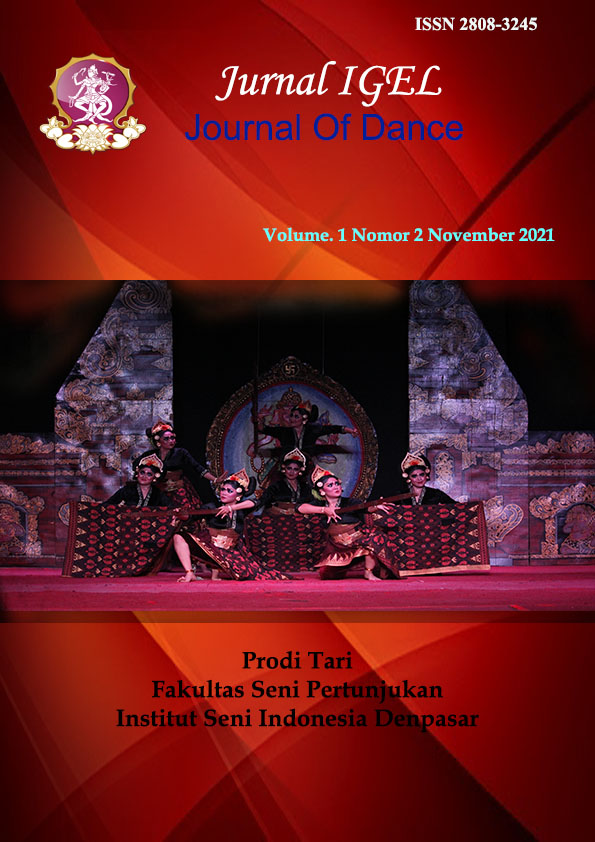Tari Aku Kumara, Sebuah Refleksi Diri Peduli Anak
DOI:
https://doi.org/10.59997/journalofdance.v1i2.860Abstract
The creation of this Aku Kumara dance work started from reading a piece of literature namely Anoman Seri
Cerita Anak dan Remaja, specifically the story of Anoman's childhood when he ate the sun. This makes the stylists
want to create a contemporary dance piece in the form of a large group by interpreting the children's I-ness (selfishness)
with curiosity to try to reach the light like the sun. This dance uses several sources of information, namely written
sources, discography, filmography, interviews, and direct observations. The theories used are the theory of imagination
and aesthetics. Related to the theory of creation, namely using the theory by Alma M. Hawkins consisting of the stages
of exploration, improvitation, and forming.
Aku Kumara is a contemporary dance piece in the form of a large group of eight male dancers who interpret
children's behavior with curiosity and determination to seek the light. The dance structure consists of the beginning, the
content, and the end with the movement approaching children and getting inspiration from Balinese dance standards
that have been re-explored into new forms. This dance work is accompanied by the FL Studio 2020 software application
with Balinese-Modern nuances. The make-up used is a theatrical type of make-up that is fantasized and adapted to the
children's character with a casual dress with the concept of jumpsuits and a highlighter green T-shirt. Aku Kumara's
dance work was staged on the concept of a proscenium stage at the Gedung Natya Mandala ISI Denpasar.
Keywords: Aku Kumara, children, contemporary, creation

Additional Files
Published
Issue
Section
License
Copyright (c) 2021 I Nyoman Kharisma Aditya Hartana, I Wayan Budiarsa, I Ketut Sutapa

This work is licensed under a Creative Commons Attribution-NonCommercial-ShareAlike 4.0 International License.
Volume 2 Nomor 1, Juni 2022







